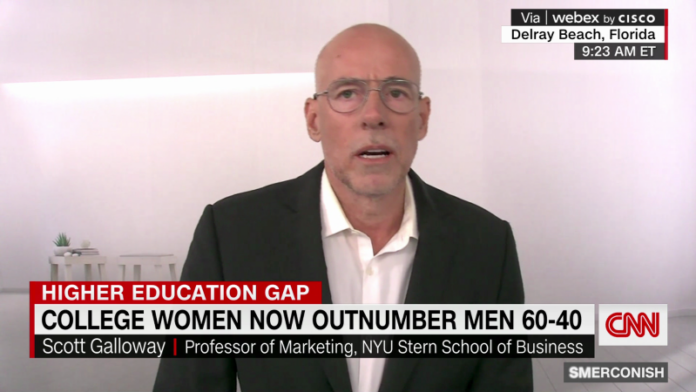The Contemporary Gender Disparity in Higher Education
In recent years, a striking phenomenon has emerged within the landscape of higher education: women now outnumber men in college enrollment across several countries, particularly in the United States. Various sociocultural dynamics have contributed to this gender imbalance, reshaping the very fabric of educational pursuit and ambition. This article seeks to elucidate the multifaceted reasons underpinning the predominance of women in college settings, while also acknowledging the historical context that has shaped educational access and participation for all genders.
Historical Context: The Evolution of Women’s Educational Opportunities
The currents of gender disparity in higher education cannot be fully comprehended without reflecting on the historical trajectory of women’s rights and educational access. For centuries, societal norms predominantly relegated women to roles confined within the domestic sphere. Education, primarily viewed as a privilege for affluent males, was inaccessible to the majority of women. This landscape began to transform gradually, chiefly during the late 19th and early 20th centuries when pivotal movements for women’s rights emerged globally.
During the suffragette movements, the demand for female enfranchisement was intrinsically linked to the appeal for educational opportunities. Women like Mary Wollstonecraft and later, figures associated with the feminist movements, ardently championed for women to achieve the intellectual capacities necessary for citizenship. The establishment of institutions dedicated to women’s education during this period, alongside landmark legislative changes, catalyzed a gradual increase in women’s higher education enrollment.
By the mid-20th century, significant advancements occurred—most notably, the passage of Title IX in the United States in 1972, which prohibited sex discrimination in federally funded education programs. This legislation was instrumental in dismantling barriers that impeded women’s access to various educational fields. Consequently, the groundwork for contemporary educational trends was laid, fostering a generation increasingly inclined toward higher education.
Sociocultural Shifts: Changing Perceptions of Gender Roles
Fast forward to the 21st century, and the sociocultural landscape has undergone exhilarating transformations that impact gender roles and aspirations. The definition of masculinity and femininity, once explicitly dichotomous, has become more nuanced and expansive, with increased acceptance of diverse identities. Simultaneously, the value attributed to education as a vehicle for personal and professional advancement has risen, particularly among women.
Women today are encouraged from a young age to pursue academic excellence, a movement further exemplified by educational initiatives aimed at empowering young girls in science, technology, engineering, and mathematics (STEM). These initiatives challenge the antiquated stereotype that associates competency in these fields primarily with males. The result is a significant uptick in female participation in traditionally male-dominated disciplines, indicating a profound shift in academic attraction and pursuit.
Moreover, the evolving role of women in professional settings has fueled their desire for advanced education. As industries transform and the demand for more highly educated employees increases, women have recognized the importance of academic credentials to secure competitive positions. This ambition, coupled with the systemic support structures available today, has contributed to the growing numbers of women pursuing college degrees.
The Economic Dimension: College as a Gateway to Financial Independence
In an era defined by economic mobility and the pursuit of financial independence, education has become an attractive prospect for women seeking autonomy. Higher education often correlates with greater earning potential, with college graduates typically enjoying higher salaries than their less-educated counterparts. This economic imperative is particularly salient among women, many of whom have historically depended on male breadwinners for financial stability.
As societal expectations and economic pressures coalesce, women increasingly view a college education not merely as an optional luxury but as a requisite for financial success. This conceptual shift has transcended socioeconomic boundaries, encouraging a diverse spectrum of women to enroll in higher education institutions. The desire for economic self-sufficiency acts as a significant motivator, propelling women into academic realms previously dominated by men.
In tandem, the rise of female-led entrepreneurial ventures and leadership roles has further legitimized the pursuit of advanced degrees. As women break through glass ceilings in various sectors, their journeys motivate younger generations to aspire toward and achieve similar heights of educational attainment. Thus, the intersection of academia and economic empowerment becomes a formidable force in driving the current gender imbalance in college enrollment.
Addressing the Implications: Striving for Gender Parity in Education
While the increasing presence of women in college is indeed a cause for celebration, it also engenders the need to address potential consequences stemming from a gender imbalance in academic settings. One pivotal concern is the educational and career trajectories of men, as their declining enrollment rates pose a challenge to achieving equitable representation. As institutions witness shifts in gender demographics, it becomes essential to explore the underlying reasons for men’s reduced participation and ensure that comprehensive educational engagement is fostered.
Moreover, this gender imbalance must not be viewed as a zero-sum game; rather, it highlights the necessity for ongoing advocacy for men’s educational rights alongside women’s achievements. Fostering an inclusive academic environment that supports the aspirations of all genders constitutes the bedrock of a truly egalitarian educational system.
The Road Ahead: Envisioning a Balanced Future in Higher Education
As we contemplate the future of higher education, it is imperative to acknowledge that the evolving dynamics of gender participation will continue to shape the academic landscape. Diverse initiatives aimed at promoting gender inclusivity, coupled with policy reforms that champion equal opportunities, will play a critical role in curbing gender disparities. Furthermore, the collaboration between educational institutions, communities, and policymakers will be vital in crafting a future where all individuals, regardless of gender, can thrive within the academic sphere.
The journey toward gender equity in higher education remains ongoing. By examining the historical context, embracing sociocultural changes, and confronting economic imperatives, a holistic understanding of women’s increasing enrollment—and its implications—emerges. It is through collective efforts that society can pave the way for a balanced educational landscape, fostering environments that nurture the potential of all individuals and dismantling the barriers of gender inequality once and for all.





























